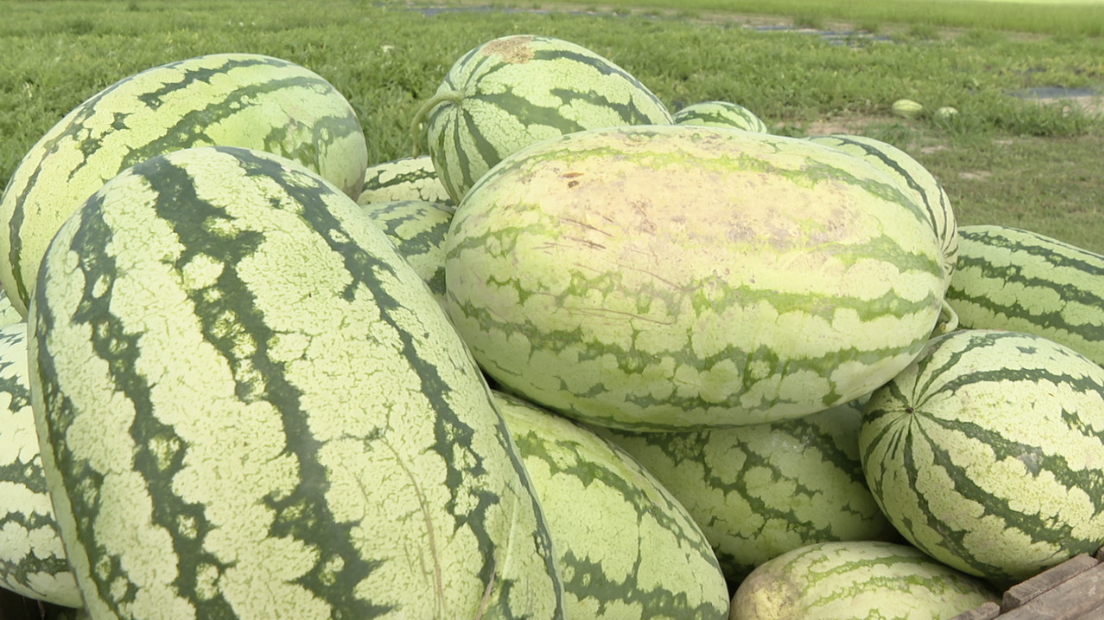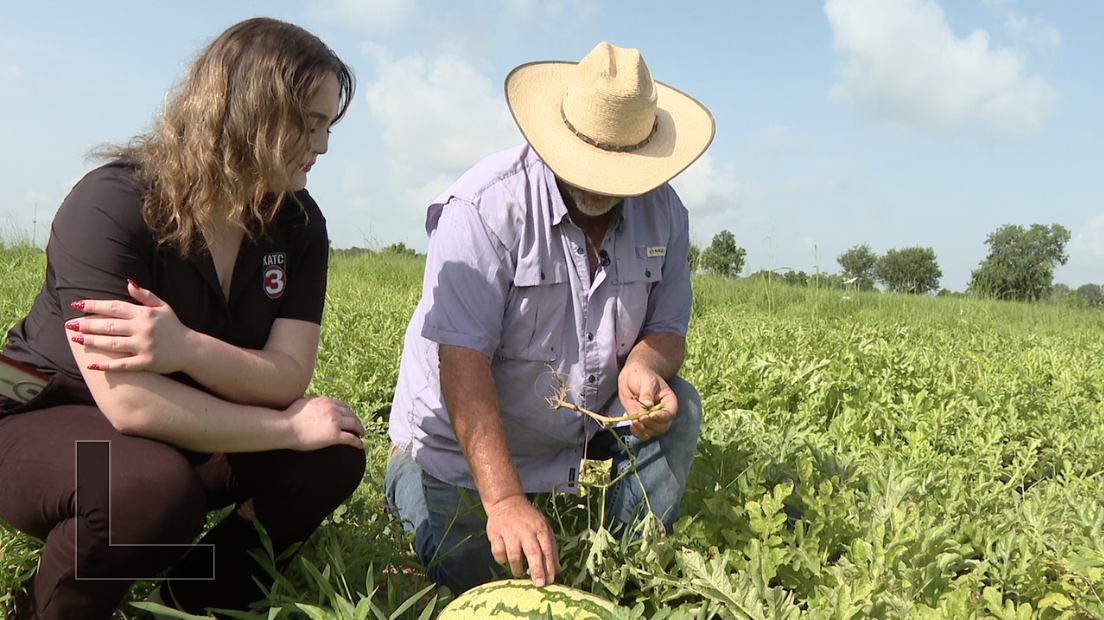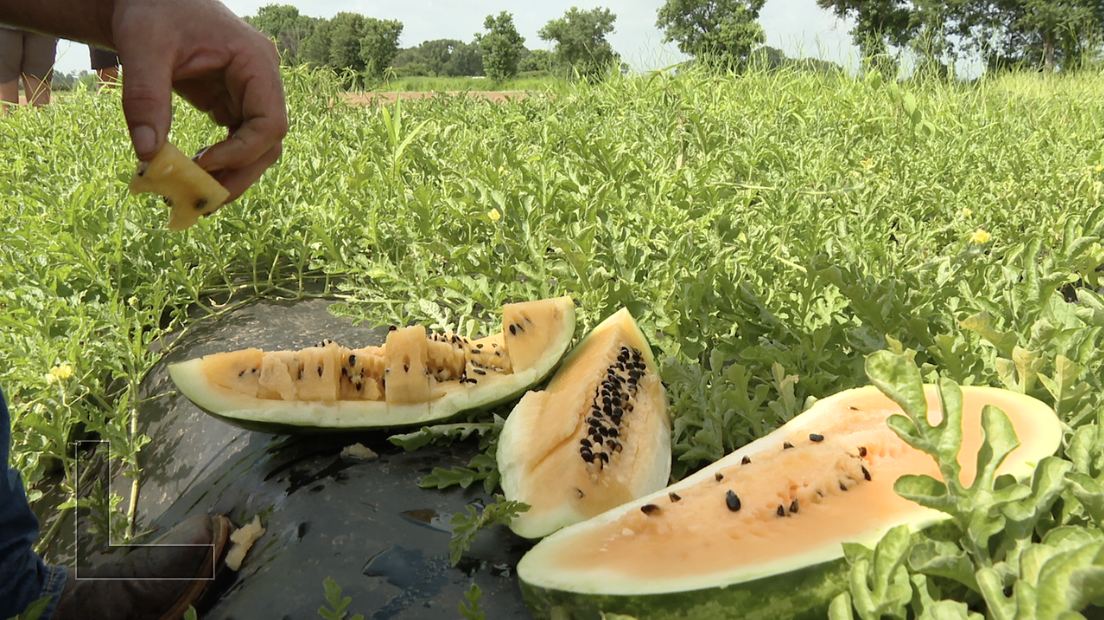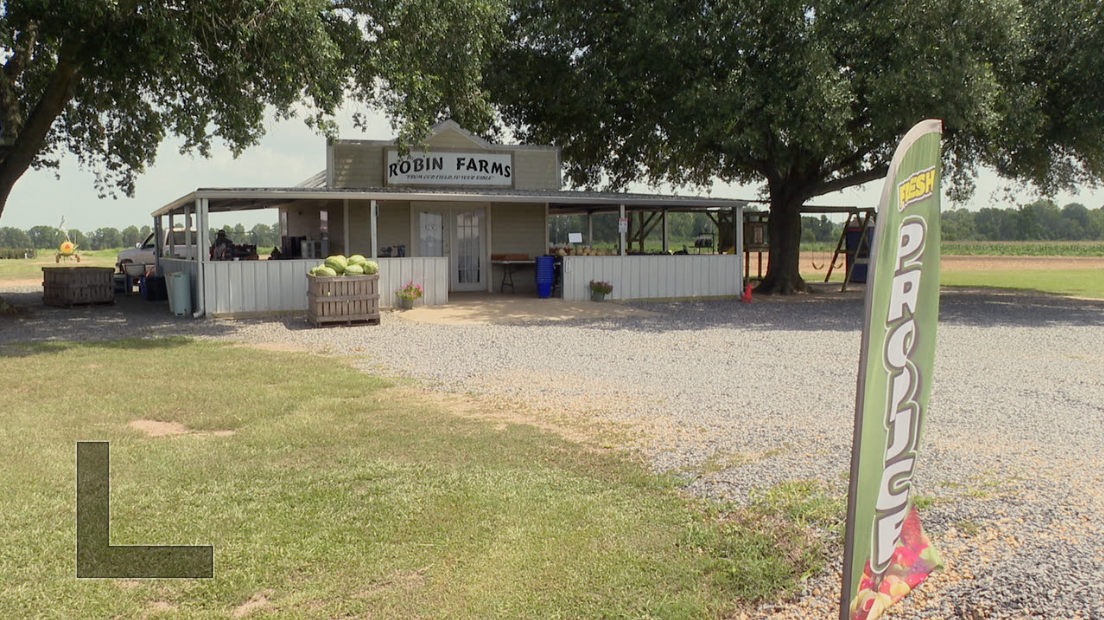CHURCH POINT, La. (KATC) — With the Fourth of July around the corner, cookouts, fireworks and family gatherings are stacking up—along with grocery bills. For many, no summer celebration is complete without a slice of watermelon.
But picking the right one at the store? That’s not always easy, even for the pros.
“Once it’s in the bin, you are kinda potluck as to what it comes out to,” said Brandt Robin of Robin Farms in Church Point. “You have these stripes, the same on the top come on the bottom, and one day it’ll go from white to cream colored and a little flatness on the belly. That’s what you want.”

Robin has spent 37 years growing melons and relies on agricultural science to do it—but he says even experienced farmers can’t always guarantee a perfect pick once they’re harvested. Time of harvest, weather patterns and soil composition are a few factors that come into play. He told KATC that anything harvested earlier than 9 a.m. is typically less sweet and more bitter than produce harvested during the mid-morning to midday hours. Still, that’s something you can’t see with the naked eye from the melon bin.

“When you buy straight from the farmer, he has something on the line,” Robin said. “I get a little choked up, but you have to be able to look that person in the eye and say, ‘Yes, this is sweet. I did my best job.’ And when you taste it, you’re gonna notice that. At the grocery store, you don't know where that produce is coming from, or how long it's been sitting there before you buy it.”
Robin told KATC that most watermelons you find at the store are imported from overseas—think Mexico, Guatemala, and Honduras. The U.S. Department of Agriculture corroborates this.

"I would say 98 percent of what you're buying at big box grocery stores is from somewhere outside the U.S.," Robin said. "Those melons are bred to handle shipping and being thrown around, with thicker rinds, whereas farmers like me who are local have fruits with more meat to them and a very thin rind, meaning they can't handle that and they go straight from our farm to your backseat."

Online tips—like thumping, checking for a creamy field spot, or looking for a uniform shape—aren’t always reliable, though these methods can be helpful. According to Robin, the heavier the fruit feels for its size, the more likely it is to be juicy. One thing to watch for is sunburned watermelons with a yellow spot on top, which may indicate overripeness. Robin also explained that a watermelon’s “pigtail”—a part of the vine rather than the fruit itself—is a reliable indicator of ripeness. When this part of the vine dries out, it’s a good sign the watermelon is ready to be picked.
Robin Farms grows both red and yellow watermelons, and while the color might be unexpected, Robin says the flavor might be worth the surprise.

“Some people say the yellow watermelon is a slightly different flavor or texture, but if you haven’t tried it yet, you should try it at least once,” Robin said. “It makes for a fun surprise at your family gatherings.”
While there may be no perfect method to picking a winner, one tip remains clear from local farmers like Robin in St. Landry Parish: shop local. That way, you know exactly what you’re getting—from farm to table.






